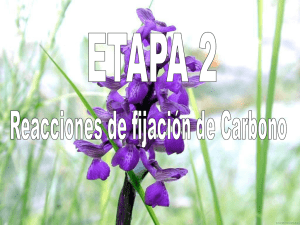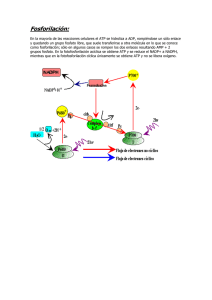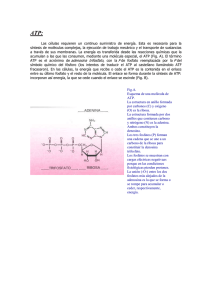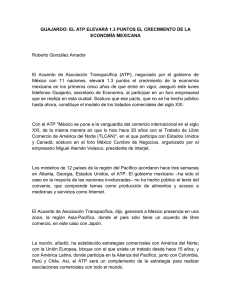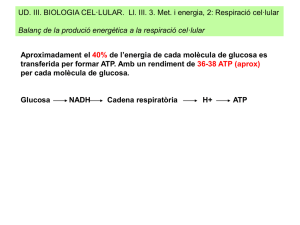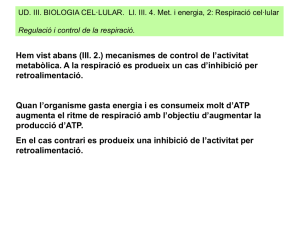Resp cel fosoforilacio oxidativa.ppt
Anuncio
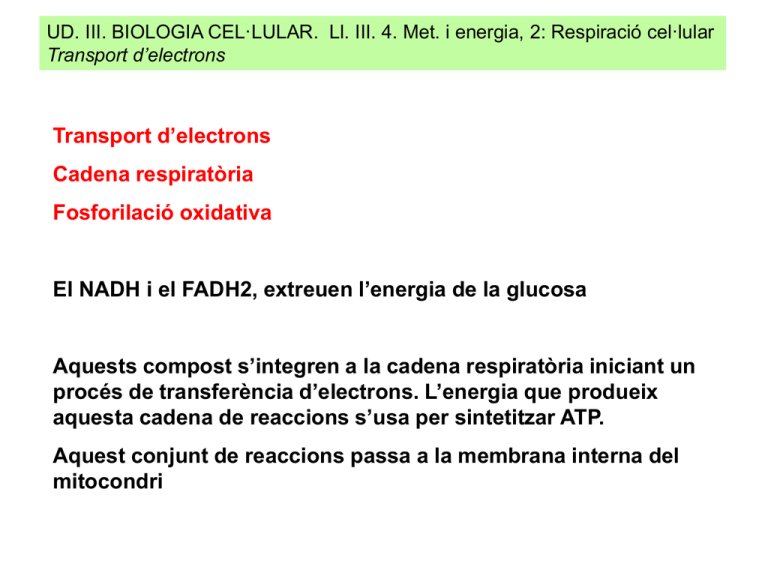
UD. III. BIOLOGIA CEL·LULAR. Ll. III. 4. Met. i energia, 2: Respiració cel·lular Transport d’electrons Transport d’electrons Cadena respiratòria Fosforilació oxidativa El NADH i el FADH2, extreuen l’energia de la glucosa Aquests compost s’integren a la cadena respiratòria iniciant un procés de transferència d’electrons. L’energia que produeix aquesta cadena de reaccions s’usa per sintetitzar ATP. Aquest conjunt de reaccions passa a la membrana interna del mitocondri NADH 50 Free energy (G) relative to O2 (kcal/mol) FADH2 40 FMN I Multiprotein complexes FAD Fe•S II Fe•S Q III Cyt b 30 Fe•S Cyt c1 Glycolysis Citric acid cycle ATP ATP Oxidative phosphorylation: electron transport and chemiosmosis IV Cyt c Cyt a Cyt a3 20 10 0 2 H+ + 1/2 O2 H2O ATP UD. III. BIOLOGIA CEL·LULAR. Ll. III. 4. Met. i energia, 2: Respiració cel·lular Quimiòsmosi La cadena respiratòria no genera ATP de forma directa Funciona facilitant la caiguda d’electrons des de la glucosa (i altres composts) a l’oxigen, fraccionant tota l’energia en petites quantitats que són més aprofitables per a les reaccions. UD. III. BIOLOGIA CEL·LULAR. Ll. III. 4. Met. i energia, 2: Respiració cel·lular L’hidrogen format a la cadena respiratòria passa de l’espai interior de les membranes mitocondrials a la matriu a través d’una bomba iònica formada per ATP sintetasa. Atravessa els porus de l’enzim. L’ATP sintetasa usa el fluxe d’H+ per formar ATP (quimiòsmosi) LE 9-15 Inner mitochondrial membrane Glycolysis Citric acid cycle ATP ATP Oxidative phosphorylation: electron transport and chemiosmosis ATP H+ H+ H+ H+ Intermembrane space Cyt c Protein complex of electron carriers Q IV III I ATP synthase II Inner mitochondrial membrane FADH2 NADH + H+ 2H+ + 1/2 O2 H2O FAD NAD+ Mitochondrial matrix ATP ADP + P i (carrying electrons from food) H+ Electron transport chain Electron transport and pumping of protons (H+), Which create an H+ gradient across the membrane Oxidative phosphorylation Chemiosmosis ATP synthesis powered by the flow of H+ back across the membrane LE 9-14 INTERMEMBRANE SPACE H+ H+ H+ H+ H+ H+ A rotor within the membrane spins as shown when H+ flows past it down the H+ gradient. H+ A stator anchored in the membrane holds the knob stationary. A rod (or “stalk”) extending into the knob also spins, activating catalytic sites in the knob. H+ ADP + P ATP i MITOCHONDRAL MATRIX Three catalytic sites in the stationary knob join inorganic phosphate to ADP to make ATP.
